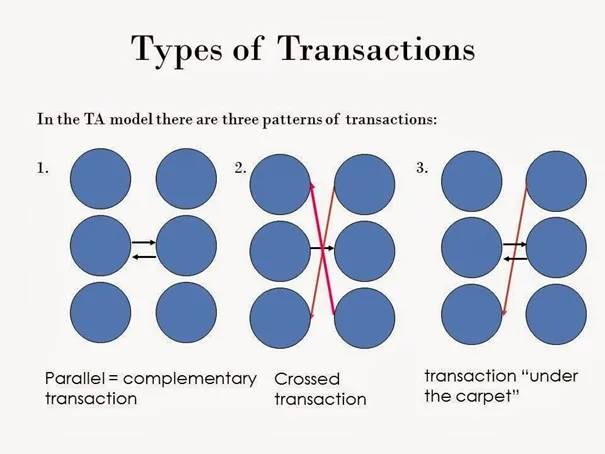Unveiling the Dark Secrets of Manipulation and Psychological Warfare in the Workplace

Conflict is an inevitable part of any workplace, but how it is managed can make a big difference. By understanding the basics of conflict resolution and applying some simple tips, you can transform conflicts into opportunities for growth and create a more positive and productive work environment.When it comes to workplace conflict, understanding the different theories and models can greatly help in managing and resolving these issues effectively

The Thomas-Kilmann Conflict Mode Instrument (TKI)
One such popular model that provides valuable insights into conflict styles is the Thomas-Kilmann Conflict Mode Instrument (TKI).
The TKI model categorizes conflict styles into five distinct types, offering a comprehensive framework to analyze and address workplace conflicts. Let’s delve deeper into each of these conflict styles to gain a better understanding of how they can impact the dynamics of a team or organization.
Firstly, the competing style is characterized by assertiveness and a high focus on individual goals. Those who adopt this style tend to prioritize their own interests over others, often leading to a win-lose outcome. This approach can be effective in situations requiring quick decisions or in instances where one party must take a firm stance, such as during a crisis or when making tough business choices.
On the other end of the spectrum, we have the collaborating style, which emphasizes cooperation and mutual understanding. Collaborators strive to find win-win solutions by actively involving all parties and valuing their input. This style encourages open communication, brainstorming, and consensus-building. By fostering a collaborative environment, team members can harness diverse perspectives and experiences to arrive at innovative and sustainable solutions.
Next, the compromising style aims to find a middle ground by seeking moderate satisfaction for all parties involved. Compromisers are willing to give and take, making concessions to reach a mutually agreeable outcome. This approach can be useful when time is limited, and a quick resolution is necessary. However, it may not always address the underlying causes of conflicts, potentially leading to recurring issues in the future.
In contrast, the avoiding style involves sidestepping or evading conflicts altogether. Avoiders may choose to withdraw from confrontations, preferring to maintain harmony and preserve relationships. While this approach can provide temporary relief, unresolved conflicts may accumulate over time and negatively impact team morale and productivity. Avoidance should be used sparingly and as a temporary measure, not as a long-term solution.
Lastly, the accommodating style prioritizes the needs and desires of others over personal interests. Accommodators tend to be selfless and seek to please others, often making sacrifices to maintain peaceful relationships. While this style can contribute to a harmonious work environment, it may also lead to personal dissatisfaction or the exploitation of accommodating individuals.It is essential to strike a balance between accommodating and asserting one’s own needs to prevent potential resentment or burnout.
Understanding these five conflict styles can empower individuals and teams to navigate conflicts effectively. By recognizing their own default style and being aware of the other styles, individuals can adapt their approach based on the specific conflict at hand. Additionally, leaders can leverage this knowledge to foster an environment that encourages open dialogue, respect for diverse perspectives, and a shared commitment to resolving conflicts constructively.
The Thomas-Kilmann Conflict Mode Instrument offers a valuable framework for understanding workplace conflicts. By recognizing and applying the different conflict styles, individuals and teams can promote healthier communication, enhance problem-solving abilities, and cultivate a more harmonious work environment. Ultimately, conflict can be an opportunity for growth and innovation when managed with empathy, understanding, and a collaborative mindset.

The Transactional Analysis theory
Transactional Analysis is a psychological theory that provides valuable insights into understanding conflict and communication styles through the exploration of ego states. Ego states can be best described as distinct aspects of our personality, each with its own set of communication patterns and ways of engaging with the world. By delving into the complexities of these ego states – namely the Parent, the Adult, and the Child – we can gain a deeper understanding of our own behavior and that of others.
The Parent ego state is perhaps the most influential in shaping our communication patterns. It represents the internalized voices of authority figures from our past, such as parents or teachers. When we tap into our Parent ego state, we often adopt a nurturing or critical role, offering advice, guidance, or even chastisement. This is because the Parent ego state is responsible for enforcing rules and teaching us societal norms. It can manifest as either a nurturing and caring figure or a strict, disciplinarian one, depending on our own experiences and upbringing.
On the other hand, the Adult ego state is characterized by rationality, logic, and objectivity. When we operate from this ego state, we approach situations with a sense of maturity and clear-headedness. The Adult ego state enables us to make decisions based on facts, analyze situations objectively, and communicate in a calm and rational manner. It allows us to detach ourselves from emotional biases and engage in problem-solving effectively.
Lastly, the Child ego state encompasses our emotions, impulses, and spontaneous nature. This ego state is closely tied to our experiences in childhood and represents our unfiltered and authentic selves. When we tap into our Child ego state, we may exhibit behaviors associated with playfulness, curiosity, or vulnerability. It can manifest as joy, creativity, or even tantrums and emotional outbursts when we feel threatened or overwhelmed.
Understanding these ego states and the roles they play in our interactions can greatly enhance our ability to navigate conflicts. By recognizing and analyzing which ego state is dominant in ourselves and others during a conflict, we can tailor our communication approach accordingly. For instance, if someone is predominantly in their Parent ego state, we may need to engage with them in a respectful and deferential manner. Conversely, if someone is in their Child ego state, we may need to offer them support, empathy, and reassurance.
Moreover, Transactional Analysis also explores the concept of transactions – the ways in which we interact and communicate with others. These transactions can be classified into three types: complementary, crossed, and ulterior.
Complementary transactions occur when individuals communicate from the same ego state. For example, if one person speaks from their Parent ego state, and the other responds from their Child ego state, a complementary transaction takes place. On the other hand, crossed transactions occur when individuals communicate from different ego states.
This misalignment can often lead to misunderstandings and conflict escalation. For instance, if one person communicates from their Adult ego state, and the other responds from their Parent ego state, a crossed transaction occurs. In such cases, it is crucial to recognize and adjust our communication style to achieve effective and harmonious interactions.
Additionally, ulterior transactions involve hidden messages or intentions behind the overt communication. These can be manipulative in nature, with one party attempting to control or influence the other. By being aware of these ulterior transactions, we can better understand the dynamics at play and navigate them with greater clarity and intention.
Overall, Transactional Analysis provides a comprehensive framework for understanding the complexities of human interactions and conflict resolution. By exploring the various ego states and transaction types, we can develop a deeper sense of self-awareness and empathy. This understanding empowers us to communicate effectively, build healthier relationships, and create a more harmonious world.

Practical Tips for Conflict Resolution
Conflict resolution is a crucial skill to cultivate in any personal or professional setting. Here are some practical tips to help you navigate and resolve conflicts effectively:
- Active Listening: Truly understanding the perspective of the other person is the first step to resolving conflicts. Practice active listening by giving your full attention, maintaining eye contact, and demonstrating empathy.
- Maintain Calmness: It’s natural for emotions to run high during conflicts, but it’s important to stay calm and composed. Take deep breaths, count to ten, or step away momentarily if needed. This will help you approach the situation with a clear mind.
- Focus on the Issue, Not the Person: Address the problem at hand, rather than attacking the person involved. Avoid making personal insults, as this can escalate the conflict further. Keep the conversation focused on finding a solution.
- Seek Common Ground: Look for areas of agreement or shared interests between both parties. Finding common ground can help build rapport and create a foundation for resolving the conflict.
- Communicate Clearly: Use assertive communication to express your thoughts and feelings effectively. Clearly state your perspective, using “I” statements to avoid sounding accusatory. Be open to hearing the other person’s viewpoint as well.
- Collaborate for Solutions: Approach conflict resolution as a joint problem-solving exercise. Brainstorm potential solutions together and be open to compromise. Remember, the goal is not to win but to find a solution that satisfies both parties.
- Apologize and Forgive: If you realize you have made a mistake, take responsibility for your actions and offer a sincere apology. On the other hand, be willing to forgive if the other person offers a genuine apology. Forgiveness can help rebuild trust and foster a positive resolution.
- Learn and Grow: Conflict can be an opportunity for personal growth and learning. Reflect on the situation afterwards and think about how you can handle similar conflicts better in the future. Focus on continuous self-improvement.
Remember, conflict resolution takes time and effort. By implementing these practical tips, you can foster healthier relationships, improve communication, and create a harmonious environment.

Leave a Reply